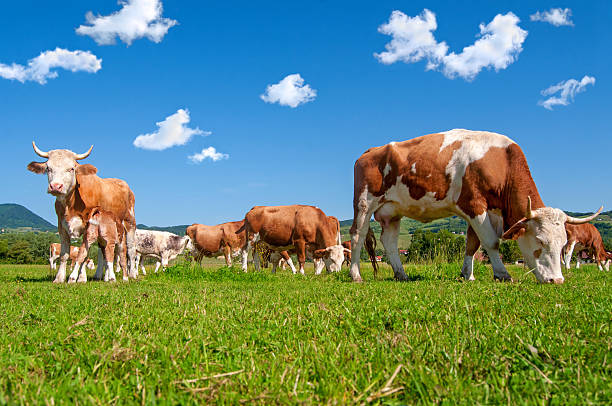Automated Safety
Farm Safety
Farm Management
Automated Safety
Farm Safety
Farm Management
Reasons Why Rotational Grazing Matters
By James Diamond, October 11, 2022

The process of containing and moving animals over the pasture in a rotational pattern, with the goal of improving the health of the soil, vegetation, and animals, is known as rotational grazing.
Rotational grazing is a method of managing land for the long term with the goal of maximising the economic return that may be obtained from grazing each individual acre. Paddocks or cells have been established throughout the pasture. Every paddock is allowed some time to relax and recover after being subjected to intense grazing for short periods at a time. Paddocks that have been grazed can help forage plants recuperate and establish deeper roots if they are allowed to rest.
Rotational grazing allows a producer to rely less on supplemental feed and stored feed by prolonging the grazing season, which in turn reduces the amount of feed that needs to be stored. It is possible for the producer to make adjustments to the system so that it better meets their requirements, which is one of the system’s most exciting qualities. By adopting rotational grazing, a producer will have a greater amount of control over the timing as well as the amount of feed that is consumed by cattle. If you are interested in beginning to use this strategy, you should first contemplate dividing a single pasture into two equal parts. Try dividing the pasture into halves once more the next year if you find that doing so makes a difference. It’s possible that those who utilise this method will need some time to figure out what, specifically, yields the best results. A producer has the ability to experiment with a variety of paddock sizes and irrigation strategies by making use of materials for temporary fencing and movable watering tanks.
Economic Benefits
Because of the potential financial benefits, most farmers experiment with rotational grazing. In addition, businesses that raise beef, sheep, or dairy heifers have seen an increase in income and a decrease in expenses as a direct result of the implementation of rotational grazing systems. Grazing activities have the potential to require less investment of capital and also provide a greater degree of financial flexibility. When grazing is fully implemented, it will result in lower expenses for labour, equipment, fertiliser, and pesticides.
Time-Saving
Many farmers are hesitant to implement rotational grazing because they believe it will need a significant amount of time to transfer the cattle from one pasture to another. However, if the design of the paddock and fencing is efficient and the cattle are moved after they have been milked, the amount of time necessary to move the cattle is relatively minimal, typically averaging only fifteen minutes per day.
Environmental Benefits
Grazing improves water quality in multiple ways. High concentrations of nitrates and pesticides in our ground and surface waters can cause health problems for humans, animals, and wildlife.
Wildlife advantages
Pesticides can cause substantial harm to wildlife. Several insecticides, for instance, are hazardous and fatal to birds and other mammals (including humans). Additionally, broad-spectrum insecticides target both the target pest and insects that are good for the environment and could help prevent future pest infestations.
Rotational farming uses fewer chemicals, and grazing systems benefit everyone.
Boost pasture productivity
Rotational grazing can assist improve the quality and fertility of pastures over the long term by facilitating the growth of suitable pasture species and allowing for more even distribution of manure across the land.
Animal health and protection
It is more likely that a herd that is more productive will be able to increase in size or be improved through the selection of animals that have superior milk yields or rates of reproduction. The health of animals that are kept in grazing systems as opposed to those that are kept in restricted quarters is generally better. Because they have more space and can more easily breathe fresh air, animals are less likely to be exposed to high levels of various pathogens.
Artistic and benefits to human health
The fact that rotational grazing is a “calm way of farming” and is less noisy than mechanically harvesting your feed allows you to roam around, get some fresh air, and inspect the condition of your pasture.
*Numerous farmers and ranchers are turning to rotational grazing to maximise and optimise the use of this priceless resource. Numerous benefits of rotational grazing all contribute to an improvement in your farm’s income:
· Higher soil fertility
· Increased production of forage
· Superior forage plantation
· Utilization of forages
· Less feed is lost
· Greater drought management efficiency
· Regular animal observation
· Longer grazing intervals
For effective grazing management, it is essential to carry out a fundamental rotational grazing strategy, to leave the appropriate residue behind after grazing, and to fill feed shortfalls as required.
